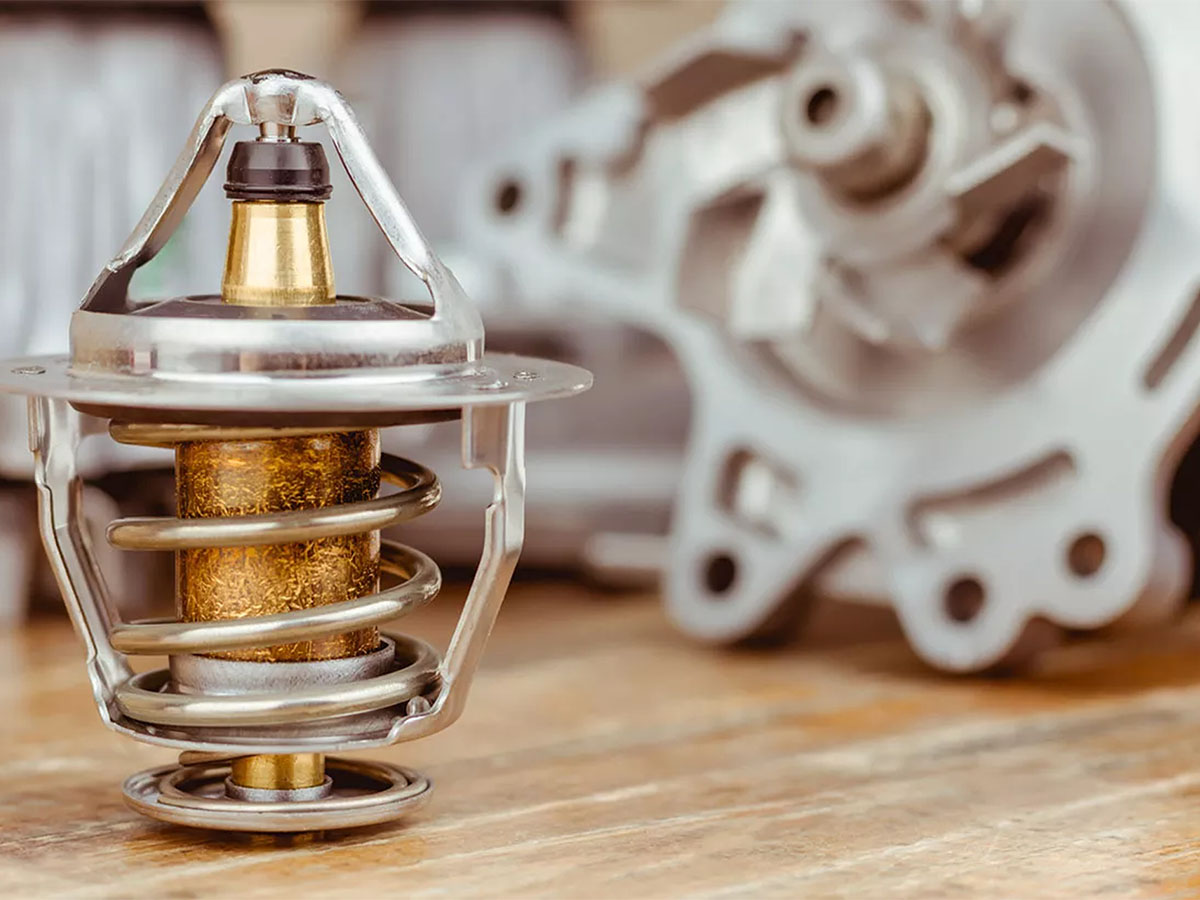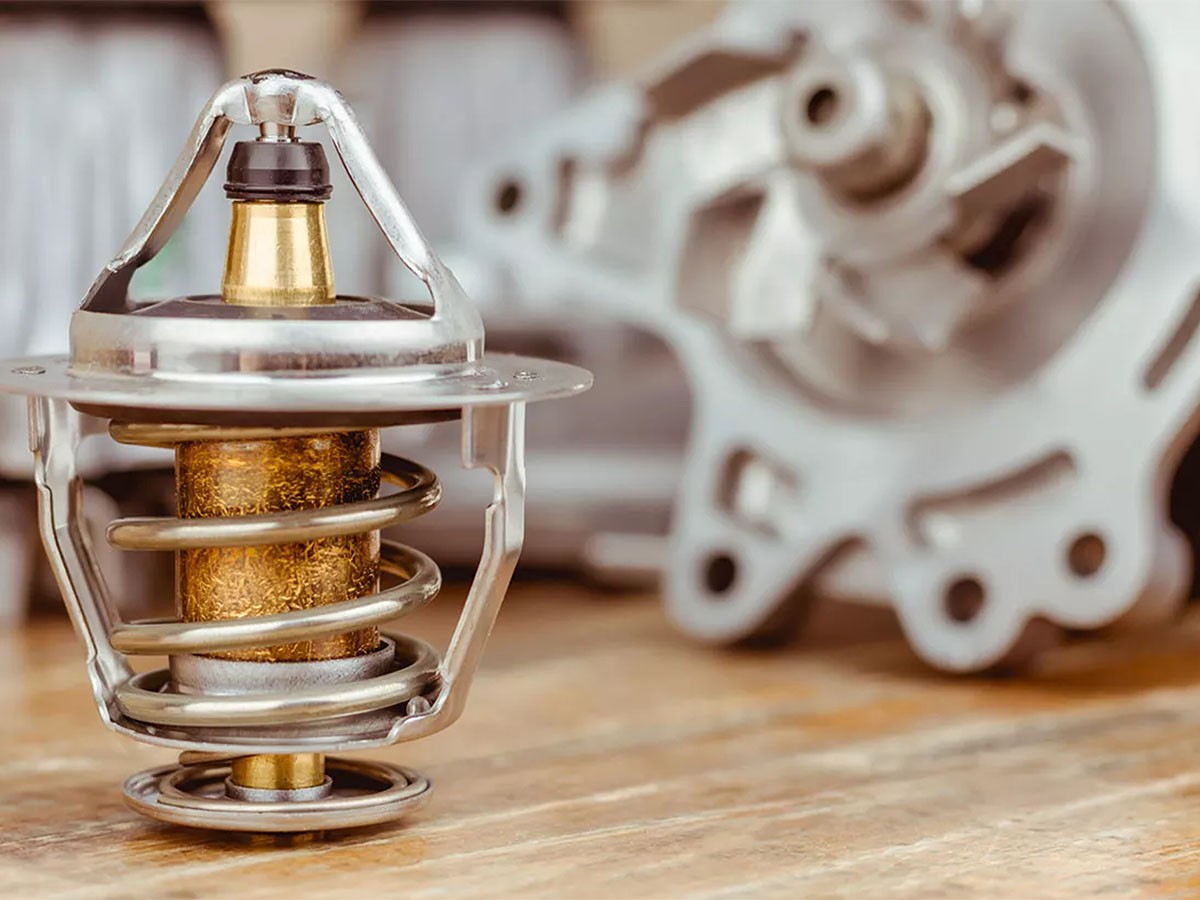How Does A Car Thermostat Work?
The thermostat is an automatic temperature-regulating device, usually containing a temperature-sensing component, which opens and closes the flow of the coolant through expansion or contraction, that is, automatically adjusts the amount of water entering the radiator according to the temperature of the cooling liquid, and changes the cooling Liquid circulation range to adjust the heat dissipation capacity of the cooling system.

The thermostat used by the engine is mainly a wax-type thermostat, which controls the circulation of the coolant through the principle of thermal expansion and contraction of the paraffin inside it. When the cooling temperature is lower than the specified value, the refined paraffin wax in the temperature-sensing body of the thermostat is solid, the thermostat valve closes the channel between the engine and the radiator under the action of the spring, and the coolant returns to the engine through the water pump to carry out internal cooling of the machine—small loop. When the temperature of the cooling liquid reaches the specified value, the paraffin wax begins to melt and gradually becomes liquid, and the volume increases accordingly and compresses the rubber tube to make it shrink. When the rubber tube shrinks, it exerts an upward thrust on the push rod, and the push rod has an effect on the valve. The downward reverse thrust opens the valve. At this time, the coolant passes through the radiator and thermostat valve and then flows back to the engine through the water pump for a large cycle. Most of the thermostats are arranged in the water outlet pipeline of the cylinder head. The advantage of this is that the structure is simple and it is easy to discharge the air bubbles in the cooling system; the disadvantage is that the thermostat is often opened and closed during work, resulting in oscillation.

When the engine operating temperature is low (below 70°C), the thermostat automatically closes the passage to the radiator and the passage to the water pump. The cooling water flowing out of the water jacket enters the water pump directly through the hose and is pumped Enter the water jacket and then circulated. Since the cooling water does not dissipate heat through the radiator, the working temperature of the engine can rise rapidly. This circulation route is called a small circulation. When the working temperature of the machine is high (above 80°C), the thermostat automatically closes the passage to the water pump and the passage to the radiator. The sleeve increases the cooling intensity to prevent the engine from overheating. This cycle is called a large cycle. When the working temperature of the machine is between 70 and 80°C, large and small circulations exist at the same time, that is, part of the cooling water performs a large circulation, while the other part of the cooling water performs a small circulation.
The function of the car thermostat is to close the car before the temperature reaches the normal temperature. At this time, the coolant of the engine is returned to the engine through the water pump, and the small circulation in the engine is carried out to make the engine heat up quickly. It can be opened when the normal temperature is exceeded, allowing the coolant to circulate through the entire radiator circuit of the water tank to quickly dissipate heat.













